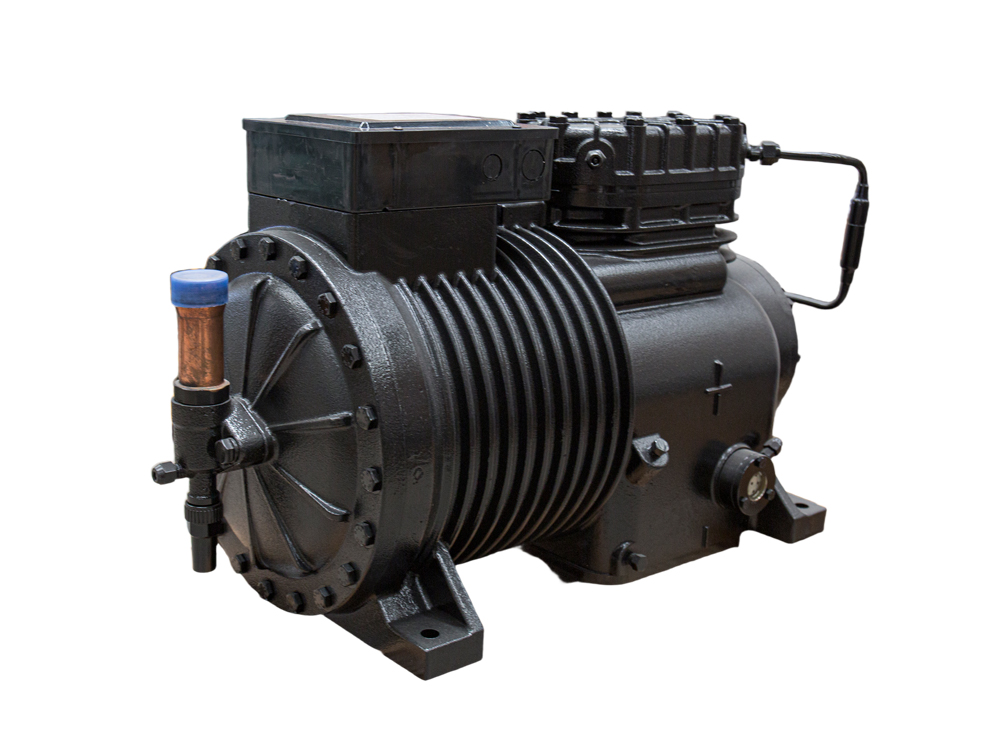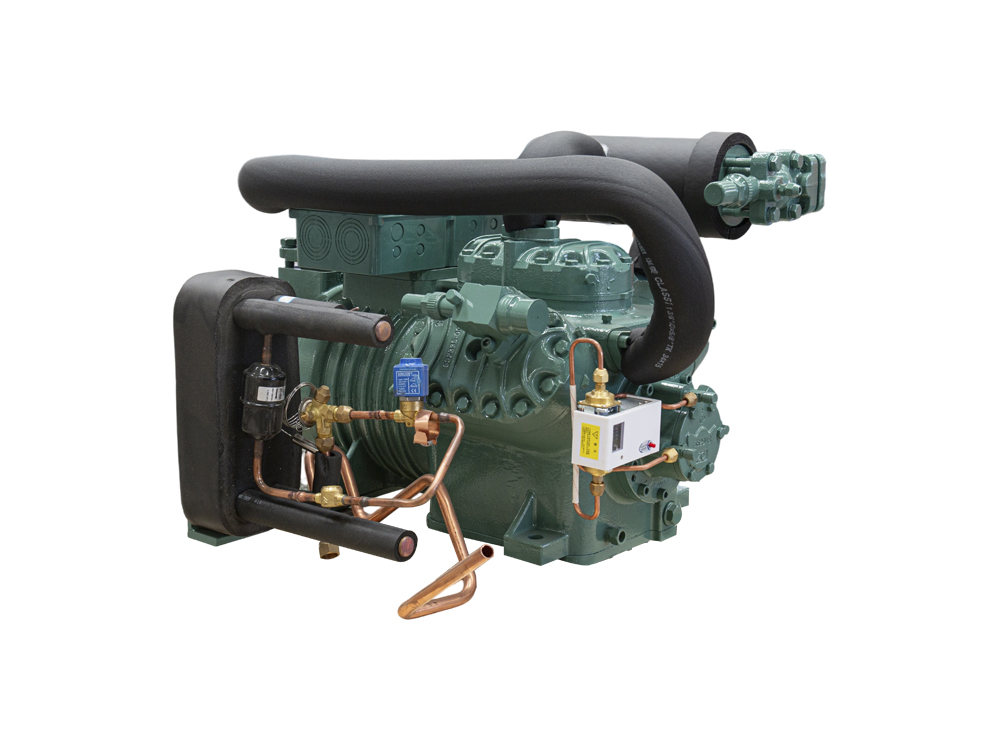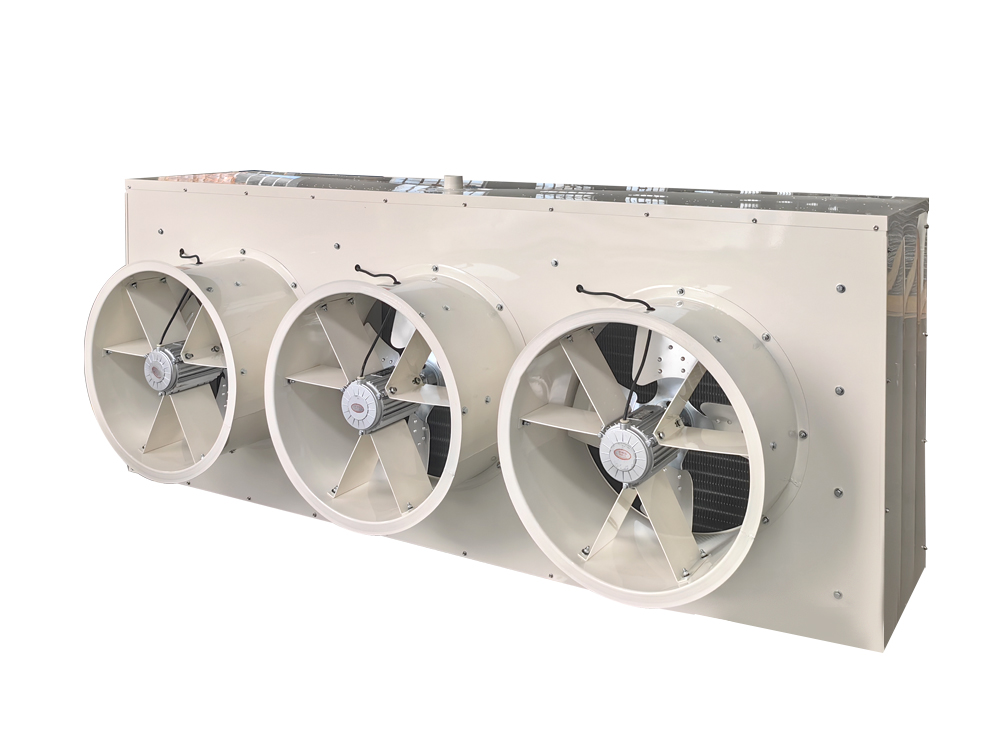- 1 Introduction
- 2 1. Working Principle of Water Defrosting Air Cooler
- 3 2. Core Advantages of Water Defrosting Air Cooler
- 4 3. Industrial and Commercial Application Scenarios
- 5 4. Energy-Saving and Environmental Value
- 6 5. Maintenance and Usage Recommendations
- 7 6. Technological Upgrades and Future Trends
- 8 7. Conclusion
Introduction
With the development of industrial production and commercial cold chains, cooling equipment has become increasingly important in modern production environments. From food processing factories to cold chain logistics warehouses, and even large-scale commercial cooling systems, efficient, energy-saving, and reliable air cooling equipment is a key choice for enterprises to improve production efficiency and reduce operational costs. Among various cooling technologies, Water defrosting air cooler has gradually become a new favorite in industrial and commercial cooling due to its high cooling capacity, energy-saving and environmentally friendly characteristics, and adaptability in complex working conditions.
Traditional air coolers accumulate frost on the surface of the cooling coils due to low temperature, which not only reduces heat exchange efficiency but also may lead to equipment failure and increase maintenance costs. Water defrosting air cooler uses automatic water defrosting technology to continuously operate efficiently without affecting cooling performance, overcoming many limitations of traditional air coolers.
This article will comprehensively analyze Water defrosting air cooler from the perspectives of working principle, core advantages, application scenarios, energy-saving and environmental value, and maintenance suggestions, providing a reference for enterprises to optimize cooling system selection and operation.
Low noise water defrosting outer rotor industrial air cooler
1. Working Principle of Water Defrosting Air Cooler
1.1 Basic Structure
Water defrosting air cooler mainly consists of the following components:
- Cooling Coil System: Uses high-efficiency heat exchange materials to ensure rapid energy transfer between air and refrigerant.
- Fan System: Ensures forced air circulation, improving air contact with the cooling coils for uniform cooling.
- Water Frost Automatic Defrost System: Periodically or on-demand melts frost on the cooling coil surface through spraying or circulating water, maintaining stable cooling efficiency.
- Control System: Intelligently controls frost thickness, defrosting time, and fan operation to achieve energy-efficient operation.
This design allows Water defrosting air cooler not only to perform traditional air cooling but also to overcome efficiency decline caused by frost accumulation.
1.2 Frost Accumulation Problems and Limitations of Traditional Solutions
During industrial refrigeration, when the cooling coil temperature drops below the air dew point, moisture in the air condenses on the coil surface as frost. Over time, frost buildup causes the following problems:
- Reduced heat exchange efficiency: Frost blocks heat transfer, reducing cooling performance.
- Airflow obstruction: Reduced airflow leads to uneven cooling.
- Increased energy consumption: Equipment needs to run longer to achieve set temperatures, increasing electricity costs.
- Equipment wear: Frequent defrosting operations may damage fans, piping, and control systems.
Traditional air coolers rely on the following defrost methods:
- Shutdown defrost: Requires interrupting cooling operation, reducing production efficiency.
- Electric heating defrost: Melts frost using heating elements but consumes high energy.
- Natural melting: Relies on ambient temperature rise, which is unreliable in low temperature or continuous cooling scenarios.
Compared with traditional methods, Water defrosting air cooler uses water frost automatic defrosting technology to melt frost during cooling operation, enabling continuous and efficient cooling.
1.3 Automated Water Frost Defrosting Principle
The core innovation of Water defrosting air cooler lies in the automated control of water frost defrosting. Its working principle includes:
- Frost monitoring: Sensors detect frost thickness on the coil surface in real time.
- Automatic defrost initiation: When frost reaches a preset thickness, the control system activates the water circulation or spraying system.
- Defrosting process: Water melts the frost rapidly and is drained by the fan, ensuring air circulation.
- Resume normal operation: After defrosting, the system stops spraying and restores full cooling mode, ensuring continuous and efficient system operation.
Through this intelligent automation, Water defrosting air cooler reduces energy consumption, increases system stability, and provides a scientific and efficient cooling solution for industrial and commercial applications.
2. Core Advantages of Water Defrosting Air Cooler
2.1 Significant Energy Savings
Energy costs are among the largest operational expenses for enterprises. Traditional electric heating defrost is effective but consumes high energy. Water defrosting air cooler melts frost using water circulation or spraying during cooling operation without extra electric heating:
- Reduced electricity consumption: No need for additional heating devices, saving significant electricity.
- Shorter defrost time: Rapid defrosting reduces downtime or efficiency loss.
- Improved overall system efficiency (EER): Continuous operation reduces energy consumption per unit cooling.
Following the Energy-efficient defrosting cooler concept, enterprises can maintain cooling performance while significantly reducing energy costs.
2.2 Improved Cooling Efficiency
Frost buildup is a major factor affecting heat exchange efficiency. Water defrosting air cooler keeps the coil surface at optimal heat exchange status through automated defrosting:
- Continuous high-efficiency cooling: Frost does not block heat transfer.
- Uniform air distribution: Fan and coil work together to ensure stable temperature.
- Enhanced overall system performance: Reduced cooling load fluctuations, extended system life.
2.3 Wide Applicability
Water defrosting air cooler is suitable not only for industrial environments but also for commercial and special working conditions, including:
- Industrial factories: Workshop temperature control, machinery cooling.
- Food processing and cold chain storage: Maintain cold chain safety and prevent frost damage to products.
- Malls, supermarkets, and large refrigeration systems: Provide comfortable cooling environment while reducing operational costs.
Especially in continuous cooling environments, Commercial water defrost air system ensures stable cooling and avoids economic losses caused by shutdown defrosting.
3. Industrial and Commercial Application Scenarios
3.1 Industrial Field
In industrial production, stable and efficient cooling systems are critical. Enterprises adopting Industrial air cooler water defrost benefit from:
- Reduced equipment downtime: Automatic water defrost system eliminates frequent shutdowns.
- Improved production efficiency: Maintains stable equipment temperature for continuous operation.
- Lower maintenance costs: Reduces manual defrosting and energy consumption.
Industries such as electronics manufacturing, chemical production, and metal processing require continuous and efficient cooling. Water defrosting air cooler has been widely applied in these sectors.
3.2 Commercial Field
In commercial cold chains and public places, such as supermarkets and malls, cooling reliability directly affects customer experience and product safety. Commercial water defrost air system provides:
- Stable and comfortable environment: Ensures optimal temperature for food, beverages, and pharmaceuticals.
- Reduced operating costs: High-efficiency automatic defrosting lowers energy use.
- Extended equipment life: Reduces wear on fans, piping, and control systems.
In large cold storage, ordinary air coolers may cause uneven cooling or product risk due to frost buildup. Water defrosting air cooler ensures continuous and efficient system operation.
3.3 Other Special Applications
Special environments, such as low-temperature laboratories, pharmaceutical storage, and high-humidity industrial areas, are also suitable for Water defrosting air cooler. Its intelligent control system can adjust defrost strategies according to environmental changes, achieving precise cooling and energy management.
4. Energy-Saving and Environmental Value
4.1 Energy Saving Analysis
4.1.1 Reduced Electricity Consumption
Compared with electric heating defrost, Water defrosting air cooler uses water-based defrosting during cooling operation:
- Energy saving ratio: Water defrost reduces electric heating energy consumption by approximately 30%-50% under different working conditions.
- Continuous high-efficiency cooling: Avoids efficiency loss caused by shutdown defrosting.
- Improved energy utilization: Minimizes energy waste and lowers electricity consumption per unit cooling.
4.1.2 Reduced Operational Costs
Energy savings also include reduced maintenance and downtime costs:
- Automatic defrost reduces manual operations and inspection frequency.
- Rapid defrost shortens downtime, ensuring production continuity.
- Reduces equipment failure from frost accumulation, extending fan and piping life.
4.2 Environmental Value
4.2.1 Reduced Carbon Emissions
- No electric heating: Reduces electricity consumption and carbon footprint.
- Optimized cooling load: Prevents overoperation of refrigeration units.
- Resource saving: Efficient water defrosting minimizes waste.
4.2.2 Sustainable Cooling Solutions
Using Eco-friendly air cooler with water defrost, enterprises can:
- Meet green building or factory certification requirements.
- Enhance corporate environmental image.
- Implement low-energy, low-carbon operation in cold chain logistics.
Intelligent control of Water defrosting air cooler allows flexible adjustment of defrost strategies, minimizing environmental impact.
4.3 Energy-Saving and Environmental Applications
- Food cold chain storage: Maintains stable cold storage temperatures while reducing energy consumption.
- Industrial workshops: Continuous cooling reduces downtime and energy use, improving efficiency.
- Malls and supermarkets: Intelligent water defrost control saves energy and improves customer comfort.
5. Maintenance and Usage Recommendations
5.1 Regular Water System Check
- Ensure spray pipes are not blocked for smooth water flow.
- Check pump operation to maintain stable defrost water supply.
- Clean filters to prevent impurities affecting coil heat exchange.
5.2 Winter and High-Humidity Operation
- Ensure water pipes are protected from freezing in low temperatures.
- Check fan and coil surfaces regularly in high humidity to ensure automatic defrost works properly.
- Adjust defrost frequency according to humidity to avoid over or under-defrosting.
5.3 Daily Maintenance to Extend Equipment Life
- Clean fan and coil surfaces to ensure smooth airflow.
- Check control system: sensors and logic operation, update software when needed.
- Monitor refrigerant pressure to maintain optimal system operation.
With proper maintenance, Water defrosting air cooler can operate stably in industrial and commercial environments for a long time, fully realizing energy-saving, environmental, and efficient cooling advantages.
6. Technological Upgrades and Future Trends
6.1 Intelligent Control Systems
Future Water defrosting air cooler will increasingly adopt intelligent control systems with IoT technology, achieving:
- Real-time monitoring of frost thickness, temperature, and humidity.
- Smart adjustment of fan speed and defrost water volume based on actual conditions.
- Remote monitoring and data analysis for optimized operation and maintenance.
6.2 Energy-Saving and Environmental Innovations
- Low-temperature water circulation: Reduces energy consumption and improves defrost efficiency.
- Eco-friendly refrigerants: Combined with water defrost technology to reduce environmental impact.
- Modular design: Flexible combination according to needs, improving adaptability and maintenance convenience.
These technological upgrades will make Water defrosting air cooler more important in future industrial and commercial cooling, meeting the requirements for energy saving, environmental protection, and high efficiency.
7. Conclusion
In summary, Water defrosting air cooler has the following advantages in modern industrial and commercial cooling:
- Automatic water frost defrosting: Resolves frost accumulation and enables continuous high-efficiency cooling.
- Energy-efficient: Reduces electricity consumption and operating costs.
- Wide applicability: Suitable for industrial workshops, cold chain storage, supermarkets, and special environments.
- Environmentally friendly and sustainable: Lowers carbon emissions and optimizes resource utilization.
- Easy maintenance: Intelligent control and proper upkeep extend equipment life and operational stability.
By integrating keywords such as Industrial air cooler water defrost, Energy-efficient defrosting cooler, Commercial water defrost air system, Water defrost refrigeration solutions, and Eco-friendly air cooler with water defrost, enterprises can implement high-efficiency, energy-saving, and eco-friendly cooling solutions using smart water frost defrosting technology.
With increasing demands for energy efficiency and environmental protection, Water defrosting air cooler will play a more significant role in various cooling applications, becoming an indispensable core component of modern refrigeration systems.


 English
English русский
русский Español
Español



